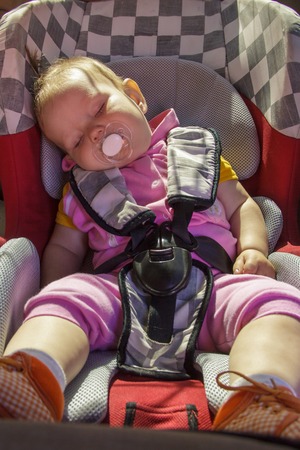1. Choosing the Right Car Seat
Ensuring your baby or toddler is safe and comfortable during car rides starts with selecting the right car seat. Understanding the different types of car seats, proper installation techniques, and safety guidelines is essential for a secure journey.
Types of Car Seats
Car seats are designed for different age groups and stages of development. Choosing the appropriate one based on your childs age, weight, and height is crucial for safety.
| Type | Age & Weight Guidelines | Description |
|---|---|---|
| Rear-Facing Infant Car Seat | Newborn to around 2 years old (up to 35 lbs) | Provides the best protection for infants by supporting their head, neck, and spine. |
| Convertible Car Seat | Birth to around 4 years old (up to 50 lbs) | Can be used rear-facing for infants and switched to forward-facing as the child grows. |
| Forward-Facing Car Seat | Around 2 to 7 years old (up to 65 lbs) | Designed with a harness system that secures toddlers once they outgrow rear-facing seats. |
| Booster Seat | Around 4 to 12 years old (40-100 lbs) | Keeps children properly positioned so the vehicles seat belt fits them correctly. |
Proper Installation Techniques
A properly installed car seat can significantly reduce the risk of injury in an accident. Follow these key steps:
- Read the Manual: Always refer to both the car seat manual and your vehicle’s owner manual for correct installation.
- Tighten Straps Securely: The car seat should not move more than an inch in any direction when pulled at the base.
- Use the Correct Anchors: Depending on your car seat type, secure it using either the LATCH system or the vehicles seat belt.
- Avoid Bulky Clothing: Thick jackets or blankets can prevent harness straps from fitting snugly against your childs body.
Safety Guidelines to Follow
The American Academy of Pediatrics (AAP) recommends keeping children rear-facing for as long as possible, ideally until they exceed their car seat’s height or weight limits. Here are some additional safety tips:
- No Loose Objects: Store loose toys or items securely to prevent them from becoming projectiles in a crash.
- Avoid Aftermarket Accessories: Only use accessories that come with or are approved by your car seat manufacturer.
- No Front Seat for Young Children: Always place car seats in the back seat, away from active airbags.
Selecting and installing the right car seat is one of the most important steps in ensuring your child’s safety during travel. Take time to research and follow all recommendations to keep your little one secure on every journey.
2. Packing Essentials for a Smooth Ride
When traveling with babies and toddlers, being well-prepared can make the journey much easier. Packing the right essentials ensures a smoother, stress-free car ride for both parents and little ones. Here are some must-have items to bring along:
Diaper Bag Must-Haves
- Diapers & Wipes: Pack enough diapers for the trip, plus extra in case of delays.
- Changing Pad: A portable changing pad makes diaper changes on the go more convenient.
- Plastic Bags: Useful for disposing of dirty diapers or storing soiled clothes.
Snacks & Drinks
- Healthy Snacks: Pack easy-to-eat snacks like crackers, fruit pouches, or cereal bars.
- Sippy Cups & Bottles: Keep milk, water, or juice readily available to keep your child hydrated.
Toys & Entertainment
- Favorite Toys: Bring soft toys or small stuffed animals for comfort.
- Books & Activity Boards: Interactive books or magnetic drawing boards can keep little hands busy.
- Music & Audiobooks: Play nursery rhymes or kid-friendly audiobooks to keep them entertained.
Extra Clothes & Comfort Items
- A Change of Clothes: Accidents happen! Pack an extra set of clothes for your baby and yourself.
- Blanket & Pacifier: A familiar blanket or pacifier can help soothe your baby during the ride.
First-Aid & Emergency Supplies
| Item | Purpose |
|---|---|
| Bandaids & Antiseptic Wipes | Treat minor cuts or scrapes. |
| Pain Reliever (Infant/Toddler) | For unexpected fevers or discomfort. |
| Nasal Aspirator | Cleans a stuffy nose easily. |
| Sunscreen & Bug Spray | If you’ll be making outdoor stops. |
| An Emergency Contact List | A printed list of important numbers just in case. |
Packing these essentials will help ensure that your road trip with your baby or toddler is as smooth and stress-free as possible. A little preparation goes a long way in making travel enjoyable for everyone!

3. Keeping Your Little One Entertained
Long car rides can be tough for babies and toddlers, especially when boredom sets in. Keeping them entertained is key to a smoother journey for everyone. Here are some simple and effective ways to engage your little one while on the road.
Toys and Activities
Packing a variety of age-appropriate toys can help keep your child occupied during the trip. Choose soft, safe, and interactive toys that won’t become dangerous projectiles in case of sudden stops.
| Toy Type | Why Its Great for Travel |
|---|---|
| Soft stuffed animals | Comforting and safe for little hands |
| Board books | Sturdy pages prevent tearing, great for flipping through |
| Busy boards | Engaging textures, buttons, and zippers keep hands busy |
| Suction cup toys | Easily attach to windows or trays for mess-free fun |
| Coloring pads with water pens | No mess coloring that dries quickly and can be reused |
Music and Audiobooks
Songs and stories are excellent ways to keep little ones engaged. Create a playlist of their favorite nursery rhymes or calming classical music to help soothe them. Audiobooks or storytelling podcasts designed for young children can also capture their attention and make the ride more enjoyable.
Recommended Audio Options:
- Songs: Classic nursery rhymes, kids sing-along songs, or lullabies
- Audiobooks: Short fairy tales or interactive sound books for toddlers
- White noise: Gentle background sounds to help with naps on the go
Interactive Games and Engagement
If your toddler is old enough, simple verbal games can work wonders in preventing restlessness. Try these easy games:
“I Spy”
A classic game where you describe something you see outside the car, and your child guesses what it is.
“Animal Sounds”
Name an animal, and have your toddler make its sound—fun and educational!
“Sing-Along Time”
Singing familiar songs together keeps spirits high and energy positive.
The key to a peaceful road trip with babies and toddlers is preparation. A mix of toys, music, and interactive engagement will help prevent frustration and keep everyone happy on the journey.
4. Managing Nap and Feeding Schedules on the Road
Keeping your baby or toddler well-rested and fed during a road trip is key to a smooth journey. Adjusting your travel schedule to accommodate proper nap times and feeding routines can help maintain a happy and well-rested baby. Here are some practical tips to manage naps and meals while on the road.
Plan Your Drive Around Sleep Schedules
Babies and toddlers thrive on routine, so try to align your driving times with their regular nap schedules. If possible, start your drive when your child is naturally ready for a nap. A moving car often helps babies fall asleep, but ensuring they are comfortable is essential.
Tips for Encouraging Car Naps:
- Use a sunshade to block out bright sunlight.
- Bring a familiar blanket or soft toy for comfort.
- Play soothing white noise or soft music.
- Avoid overstimulation before nap time.
Schedule Regular Feeding Breaks
Long car rides can disrupt normal feeding times, which may lead to a fussy baby. Plan stops around mealtime to allow for proper feeding sessions. If youre bottle-feeding or nursing, find safe rest areas where you can comfortably feed your baby.
Recommended Feeding Schedule During Travel:
| Babys Age | Feeding Frequency | Best Practices |
|---|---|---|
| Newborn (0-3 months) | Every 2-3 hours | Plan frequent short stops. |
| Infant (4-6 months) | Every 3-4 hours | Bottle-feed in a safe stop or nurse in a comfortable area. |
| Toddler (6+ months) | Main meals + snacks every 2-3 hours | Pack healthy snacks and water for easy access. |
Packing Essentials for On-the-Go Feeding
- Bottles and formula/breast milk in an insulated bag.
- Bibs and burp cloths for easy cleanup.
- Pouches of baby food or pre-cut toddler-friendly snacks.
- A spill-proof cup with water or milk for hydration.
- A portable high chair or booster seat if stopping at restaurants.
Create a Cozy Sleep Environment in the Car
A well-rested baby is a happier traveler. To make the car seat more sleep-friendly, adjust the temperature, dress your baby in comfortable clothing, and ensure they are securely strapped in without bulky layers that could affect safety.
A little planning goes a long way in making road trips with babies and toddlers smoother and more enjoyable. By aligning travel times with naps and meals, you can help prevent crankiness and keep your little one comfortable throughout the journey.
5. Planning for Safe and Comfortable Pit Stops
Long car rides with babies and toddlers require well-planned pit stops to keep everyone comfortable and happy. Choosing the right places to stop, allowing time for stretching, and ensuring clean diaper changes can make your journey much smoother.
Choose Baby-Friendly Rest Stops
Not all rest stops are created equal. Look for locations that offer family-friendly amenities such as clean restrooms, changing tables, and safe play areas. Many highway service plazas have designated family restrooms, which can be more convenient than standard facilities.
Allow for Stretch Breaks
Sitting in a car seat for long periods can make babies and toddlers restless. Plan to stop every 1.5 to 2 hours to let your little one stretch, crawl, or walk around. This helps prevent discomfort and gives them a chance to burn off some energy before getting back on the road.
Ensure Clean and Safe Diaper Changes
Finding a sanitary place for diaper changes is crucial. Always carry a portable changing pad in case the available facilities are not ideal. If youre unsure about cleanliness, changing diapers in the backseat of your car with proper precautions can be a safer option.
Checklist for Baby-Friendly Pit Stops
| What to Look For | Why Its Important |
|---|---|
| Clean Restrooms with Changing Tables | Makes diaper changes easier and more hygienic |
| Safe Play Areas | Allows toddlers to move around safely |
| Parks or Open Spaces | Great for fresh air and quick exercise |
| Family-Friendly Restaurants | Easier dining experience with high chairs and kid-friendly meals |
Pro Tip:
If youre traveling on a route with limited rest stops, check ahead using apps like Google Maps or Rest Stop Finder to locate the best options before you hit the road.


